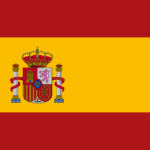It consists of inserting needles into the skin, without injecting any type of substance, in order to cause a mechanical stimulus in the target tissue to be treated for therapeutic purposes. Its main use is in myofascial pain syndrome (MDS).
Dry needling is highly indicated for ailments of the muscular system, with the presence of MTrPs, but it has also been seen to be effective in non-myofascial trigger points, such as ligamentous, tendonous, cutaneous tissue, etc. Studies should continue to be able to validate its efficacy in many pathologies.
The way to classify the most used dry needling techniques is according to the depth to which the needle reaches for treatment. With this criterion, there is the superficial dry needling (PSS), the needle remains in the underlying tissue of the MTrP, and the deep dry needling (PSP), the needle goes through the MTrP.
For superficial dry needling they will be: analgesia by hyperstimulation, stimulation of nerve fibers to block nociceptor impulses to higher centers and generation of endogenous opioid peptides. For deep dry needling: All the effects of PSS, washout of sensitizing substances due to the local spasm response, mechanical laceration of myocytes or motor plates to later regenerate, local stretching of contracted cytoskeletal structures (myocytes close to the puncture site). ), effects on blood flow and anti-inflammatory mechanisms.




